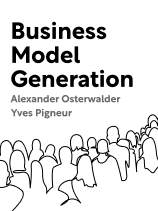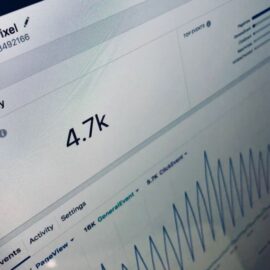

This article is an excerpt from the Shortform book guide to "Business Model Generation" by Alexander Osterwalder and Yves Pigneur. Shortform has the world's best summaries and analyses of books you should be reading.
Like this article? Sign up for a free trial here .
Do you have a business idea in mind? What are the key business aspects you need to consider when building a business model?
Starting a business requires a business model which defines how the different elements of your business will function together to make a profit. If you are a beginner entrepreneur, you’re likely at a loss: Where do you even start? Fortunately, there is a simple framework designed specifically for building a coherent business model from scratch.
In this article, you’ll learn how to build a business model from scratch using the Business Model Canvas framework by Osterwalder and Pigneur.
Business Model Canvas
Business innovation Alexander Osterwalder and Yves Pigneur developed a flexible template that they refer to as the “Business Model Canvas” to help entrepreneurs put together a functional business model. The template consists of nine elements: 1) customer groups, 2) customer touchpoints, 3) customer interactions, 4) value proposition, 5) key resources, 6) network, 7) key activities, 8) revenue streams, 9) expenses.
These elements are interdependent components that impact the effectiveness of the other elements. So, changes to one element can reduce or amplify the effects of other elements. Therefore, as you work on your business models, consider how you can leverage all of your elements to work together.
When building a business model, consider how you can leverage all of your elements to work together.
Element 1: Define Your Customer Groups
Define the different groups of customers your business intends to target—Osterwalder and Pigneur refer to this element as “Customer Segments.” You may serve one group of customers or several groups of customers depending on the needs you intend to fulfill.
Element 2: Define Your Touchpoints
Define your touchpoints, how you’ll communicate with your customers and deliver your products and services—Osterwalder and Pigneur refer to this element as “Channels.” For your communication, sales, and distribution, you have the option of using your own touchpoints (assets under your direct control such as your website or your store), or partner-owned touchpoints (external touchpoints that result from cooperation with marketing agencies or distribution partners), or a mix of both. In addition, the authors also make a distinction between direct touchpoints (communication you control such as your blog), and indirect touchpoints (communication you can’t control such as user reviews).
Touchpoints and Interactions (Element 3) are closely linked—consider the level of interaction you want to have with your customers when defining your touchpoints.
Element 3: Define Your Interactions
Define the type of interactions you want to establish for each of your customer groups—Osterwalder and Pigneur refer to this element as “Customer Relationships.” The authors advise that you consider what your motivations are for communicating with your customers as your approach will differ depending on whether you intend to acquire new customers, retain existing customers, or upsell to existing customers.
Element 4: Define Your Value Offer
Define how you intend to offer value to these customers—Osterwalder and Pigneur refer to this element as “Value Propositions.” Your value offer outlines the benefits you intend to provide in the form of products and services. The authors state that successful value offers align with the needs of your customers and differentiate themselves from existing solutions.
Element 5: Define Your Resources
Define what resources you need to create and deliver your products and services to your customer—Osterwalder and Pigneur refer to this element as “Key Resources.” According to the authors, you can own, lease, or acquire the resources you need. All resources fall into the following categories: material, monetary, intellectual, and human.
Element 6: Define Your Network
Define the alliances you need to form to optimize your business model and increase market share, acquire resources, or reduce risk—Osterwalder and Pigneur refer to this element as “Key Partnerships.” In other words, what alliances will provide you with a sustainable competitive advantage and help you to grow quickly?
Element 7: Define Your Critical Actions
Define the core actions you need to take to operate successfully and meet customer demands—Osterwalder and Pigneur refer to this element as “Key Activities.” The authors state that your actions will fall into the following categories: production (designing, manufacturing, and delivering products), troubleshooting (finding solutions to problems), and infrastructure management (managing interactions between multiple applications and parties).
Element 8: Define Your Profit Sources
Define how you intend to profit from the value you provide to your customers—Osterwalder and Pigneur refer to this element as “Revenue Streams.” The authors state that there are two types of income streams to consider: profits from single transactions and profits from ongoing payments such as subscriptions. You may have multiple income streams for each of your customer groups. Further, each of these income streams may involve different pricing mechanisms depending on whether you choose to set a fixed or variable price for your products and services.
Element 9: Define Your Expenses
Define the expenses of operating all of the elements you’ve defined in your business model—Osterwalder and Pigneur refer to this element as “Cost Structure.” Your expenses will vary depending on whether you choose to minimize costs and offer an inexpensive product or service, or if you choose to create premium-priced products and services. The authors state that your cost structures will include at least one of the following characteristics: fixed costs (salaries, rent), variable costs (costs that vary in proportion to the volume of goods or services produced), economies of scale (bulk purchase rates lessen cost per unit), and economies of scope (a single resource or activity supports multiple operations or services).
Innovation and Strategy Techniques
Osterwalder and Pigneur provide a number of techniques you can use to generate innovative ideas to adapt or create your own business models. Further, there are a number of strategies you can incorporate to help you regularly analyze and optimize the effectiveness of your business models.
1. Generate innovative ideas: Osterwalder and Pigneur argue that you first need to generate and evaluate a large number of ideas before you can come up with viable options to create an innovative business model. The authors suggest you use one of the following objectives to trigger innovative ideas: serve unmet market needs, create new products or services, disrupt an existing market, or create a new market.
2. Empathize with your customers: Osterwalder and Pigneur argue that if you find out what your customers want and figure out ways to help them before you design your products and services, you’re more likely to discover new opportunities and create a strong foundation for your business model.
(Shortform note: Specifically look for problems and inconveniences that your customers face both throughout their experience with your business and their experience with your products and services.)
3. Create visual representations: Osterwalder and Pigneur argue that visual representations of your business model allow you to better understand how each of your elements connects and interrelates.
(Shortform note: The Back of the Napkin argues that drawings can solve any problem, even if we’re convinced that we have no aptitude for it.)
4. Build detailed scenarios: Osterwalder and Pigneur suggest that you regularly create scenarios around possible future environments and the impact they will have on the way you operate. The authors recommend that you base your scenarios on the following four areas of your business environment: market, industry, key trends, and macroeconomics.
(Shortform note: Many experts argue that businesses need to consider how to evaluate and manage unanticipated external risks in advance, and develop appropriate risk management strategies to lessen their impact. For the purposes of this technique, you’ll find it beneficial if you focus on early indicators of change in your environment before you build your future scenarios.)
5. Create a story to communicate your business model: Osterwalder and Pigneur claim that creating a story centered around the value that your business model offers, from the perspective of either an employee or customer, will enable you to engage your listeners and effectively communicate your business model.
(Shortform note: You’re more likely to engage and resonate with your listeners if you recognize that each audience you address has different priorities. For example, your team cares about how your business model will affect their jobs, whereas your investors care about how they’ll profit from your business model.)
6. Prototype multiple versions of your business model: Osterwalder and Pigneur argue that prototypes of your business model will allow you to better understand the structure and combined effects of your elements. With this understanding, you can create multiple prototypes to explore and test various possibilities and strategic directions.
(Shortform note: The sooner you test your business model, the sooner you’ll know if your business model is worth investing in. There are a number of tools that you can use to test the viability of your business model. For example, you can use targeted advertising to measure consumer interest, or use your email database to test your value offer on existing customers.)
7. Use a SWOT analysis to evaluate your business model: Osterwalder and Pigneur suggest that you regularly use the Strengths, Weaknesses, Opportunities, and Threats (SWOT) analysis to evaluate the effectiveness of each of your individual elements, as well as your overall business model.
(Shortform note: There are various alternatives to the SWOT analysis that the authors don’t mention. For example, NOISE would be useful when you’re actively looking for solutions to solve problems within your organization, whereas Porter’s Five Forces Model offers an effective way to analyze your competition.)
8. Use Blue Ocean Framework to evaluate your business model: Osterwalder and Pigneur argue that using the “Four Actions Framework” to analyze the impact of each of your elements will put you in a position to create demand for innovative products and services in unclaimed markets.
(Shortform note: Porter’s Five Forces argues that businesses need to continually assess their competition to remain relevant in the marketplace. Management experts suggest that a blend of both strategies can be effective—use the “Four Actions Framework” to create your new market and then use Porter’s Five Forces to defend against your eventual competitors.)
9. Align your organization and resources: In addition to assessing your technology and resource requirements, the authors suggest that you use Jay Galbraith’s Star Model to assess whether you need to restructure or adapt your business operations to successfully implement your business model:
(Shortform note: One criticism of this approach is that it doesn’t offer any flexibility for you to adapt your business model. An alternative approach is to use your company values as a starting point—aligning your business model with your company’s values (instead of vice versa) will allow you the flexibility to innovate without having to evaluate your organizational structure.)

———End of Preview———
Like what you just read? Read the rest of the world's best book summary and analysis of Alexander Osterwalder and Yves Pigneur's "Business Model Generation" at Shortform .
Here's what you'll find in our full Business Model Generation summary :
- The nine elements that make up any successful business model
- Different ways you can combine these elements to create business model patterns
- Techniques you can use to generate innovative ideas






